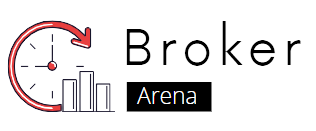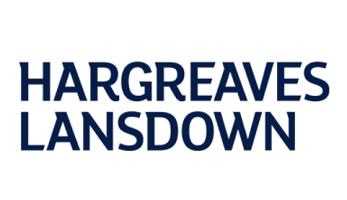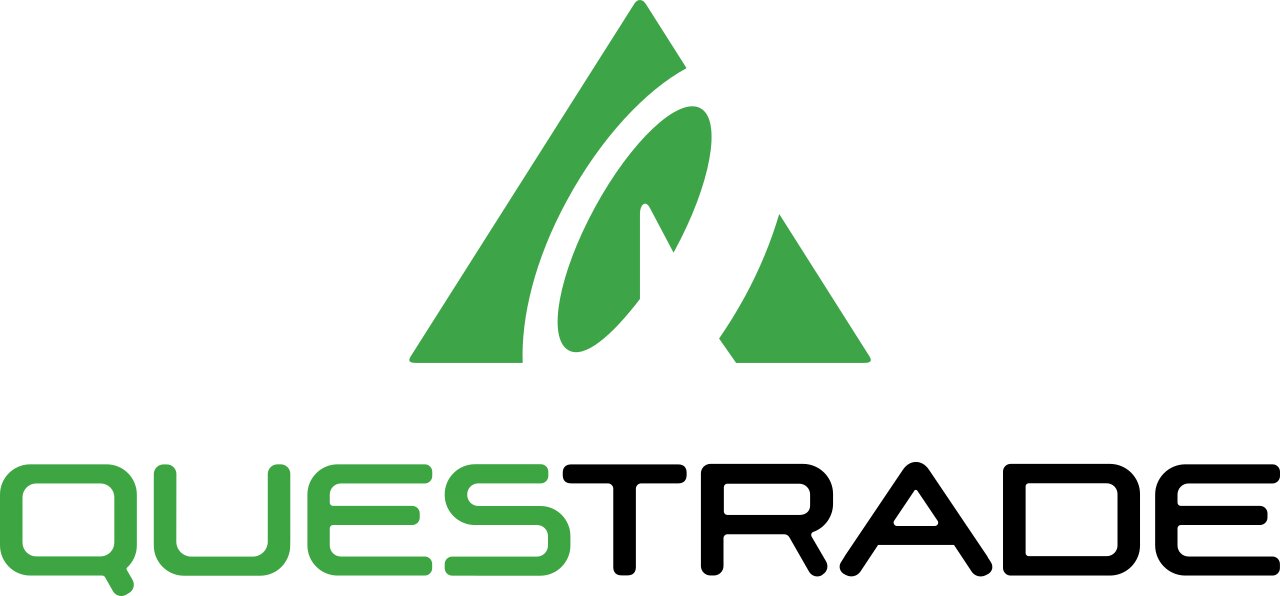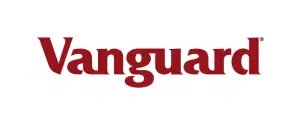Broker Arena
Broker-Arena.com is the top international guide to the best online financial brokers in 2022. Beginners and experienced traders alike can explore how to make a living on the financial markets! Wherever you are in your trading journey, we are here to help you get on your way with the right broker for you.
Top 3 Brokers
HARGREAVES LANSDOWN
- Please check and review all terms and conditions before applying.
Reputation

Tools

Fees/Costs

Overall Rating

INTERACTIVE INVESTOR
- Please check and review all terms and conditions before applying.
Reputation

Tools

Fees/Costs

Overall Rating

Latest Articles

The Investment Terms You Should be Familiar With

The ART of choosing the best financial advisor for you

Coronavirus and Investing
QUESTRADE
- Please check and review all terms and conditions before applying.
Reputation

Tools

Fees/Costs

Overall Rating

Top 3 SIPP Brokers
HARGREAVES LANSDOWN
- Please check and review all terms and conditions before applying.
What can you invest in?
Funds & Shares
Cost per share trade
0-9 TPCM: £11.95. 10-19 TPCM: £8.95. 20+ TPCM: £5.95
Account closure fee
£0
Overall Rating

CLOSE BROTHERS ASSET MANAGEMENT
- Please check and review all terms and conditions before applying.
What can you invest in?
Funds & Shares
Cost per share trade
0
Account closure fee
£0
Overall Rating

VANGUARD
- Please check and review all terms and conditions before applying.
What can you invest in?
Funds
Cost per share trade
N/A
Account closure fee
£0
Overall Rating

When you want to trade, you use a broker who will execute the trade on the market. The broker you choose is an important investment decision. Below are some points to look at when picking one:
- Speed of execution – Due to the high number of trades you might make in a day, speed of execution is important – as is getting the price you need, when you need it.
- Costs – The lower the fees and commission rates, the more viable day trading is. Active traders will be trading often – minimising these trading costs it vital
- Regulatory compliance – Make sure your broker is regulated. They will be legally obliged to protect your financial interests.
- Support – Whatever your day trading strategy, you’ll probably need assistance at some point, so look for online brokers with quick response times and strong customer support.
- Spreads, Leverage & Margin – As a day trader you want competitive spreads – you might also want certain leverage levels and low margins.
- Trading Platforms – Does it suit your needs? From a stop loss to a limit order and advanced charting, the trading platform needs to deliver the tools and features you want.
- Assets and Markets – A forex trader wants to trade different assets than someone stock trading. Brokers cater for different markets so you need to know you can trade the correct currency pairs or stocks and equities.
Do your research and read our online broker reviews first. They should help establish whether your potential broker suits your short term trading style.
Trading News
What Is Stock Trading?
The definition of “stock trading” is the buying and selling of a security in a financial market. If you’re trading online you will close out your position before the markets close for the day to secure your profits. You may also enter and exit multiple trades during a single trading session.
Brokers on occasion have different definitions for ‘active’ or day traders. Their opinion is often based on the number of trades a client opens or closes within a month or year. Some brands even refer to ‘hyper-active traders’ – a step beyond the ‘active trader’.
The purpose of broker-arena.com is to give you an overview of trading basics and what it takes for you to make it as a stock trader. From scalping a few pips profit in minutes on a forex trade, to trading news events on stocks or indices – we explain how.
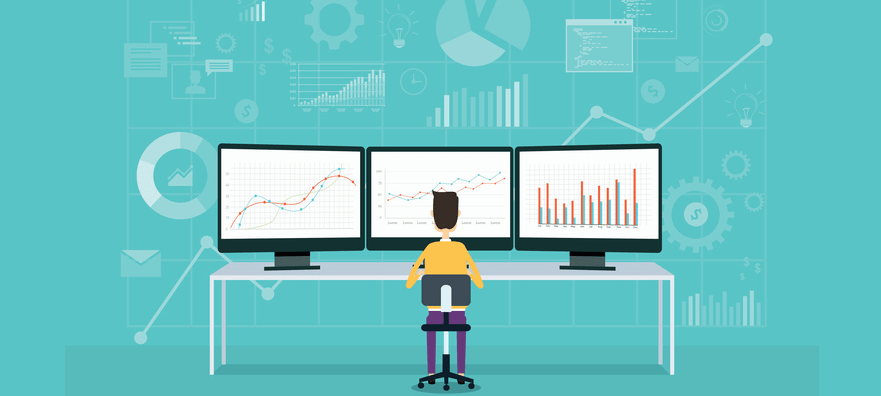
What Can Be Traded?
The most lucrative and popular day trading markets today are:
- Forex – The foreign exchange currency market is the world’s most popular and liquid.
The sheer volume of forex trading makes it attractive for day traders.There are multiple short-term opportunities in a trending currency pair, and an unrivalled level of liquidity to ensure opening and closing trades is quick and slick. More suited to technical analysis, there are other ways to trade foreign exchange. In addition, forex has no central market.This means traders can make trades six days a week, 24 hours a day. They present a great starting point for entry level or aspiring traders with full time jobs. Traders in Australia might be specifically interested in trading the AUD USD pair. - Stocks – Physical stocks in individual companies, regular and Leveraged ETFs (an “Exchange Traded Fund” holds multiple stocks or commodities and is traded like a single stock), futures, and stock options.Trading stocks intraday offers different opportunities than a traditional ‘buy and hold’ strategy. Speculating on stock prices via CFDs or spread betting for example, mean traders can profit from falling prices too.Margin or leverage also reduce the capital required to open a position. So you can take a position on the latest news release, product announcement or financial report – as well as technical indicators.
- Cryptocurrencies – The two most popular currently are Bitcoin and Ethereum.The financial vehicle of the moment.Spectacular growth has seen cryptos attract many new investors. Brokers are also ensuring retail access to these markets is less complicated. Taking a view on any of these new blockchain based currencies is being simplified all the time. Barriers to entry are now almost nil, so whether you are a bull or a bear, now is the time.
- Binary Options – The simplest and most predictable method, as the timing and return on a successful trade are known in advance.Regulatory changes are pending, and with the sector maturing, these products are now offered by big established brands. The only question for you is – will the asset rise in value, or not?With the downside limited to the size of the trade, and the potential payout known in advanced, understanding binaries is not difficult. They offer a different method of trading, and can play a part in any day trader’s daily portfolio.
- Futures – The future price of a commodity or security.
- Commodities – Oil and natural gas, food stuffs, metals and minerals
If you’re S&P 500 day trading, you’ll be buying and selling the shares of companies, such as Starbucks and Adobe. In the day trading forex market, you’ll be trading currencies, such as the Euro, U.S dollar and GBP. In the futures market, often based on commodities and indexes, you can trade anything from gold to cocoa.
Index funds frequently occur in financial advice these days, but are slow financial vehicles that make them unsuitable for daily trades. They have, however, been shown to be great for long-term investing plans.
Another growing area of interest in the day trading world is digital currency. Day trading with Bitcoin, LiteCoin, Ethereum and other altcoins currencies is an expanding business. With lots of volatility, potential eye-popping returns and an unpredictable future, day trading in cryptocurrency could be an exciting avenue to pursue.
Read more about different trading markets
Getting Started
Recent reports show a surge in the number of day trading beginners. But unlike the short term trading of the past, today’s traders are smarter and better informed, in part due to trader academies, courses, and resources, including trading apps.
broker-arena.com exists to help novice traders get educated and avoid mistakes while learning how to trade intraday.
Day trading 101 – get to grips with trading stocks or forex live using a demo account first, they will give you invaluable trading tips, and you can learn how to trade without risking real capital.
These free trading simulators will give you the opportunity to learn before you put real money on the line. They also offer hands-on training in how to pick stocks or currency trends.
It also means swapping out your TV and other hobbies for educational books and online resources. Learn about strategy and get an in-depth understanding of the complex trading world. broker-arena.com is the ideal beginners guide to day trading online.
Patterns And Technical Analysis
Stock chart patterns paint a clear picture of trading activity which helps you to decipher individuals’ motivations. They could highlight certain trading signals for example, such as volatility, which may help you predict future price movements.
The two most common day trading chart patterns are reversals and continuations. Whilst the former indicates a trend will reverse once completed, the latter suggests the trend will continue to rise.
Understanding these trading patterns, as well as ‘triangles’, ‘head and shoulders’, ‘cup and handle’, ‘wedges’ and plenty more, will all make you better informed when it comes to employing your trading strategies.
Trading Strategies
Head over to websites like Reddit and you’ll see many trading newcomers who will often fall at the strategy hurdle, taking the first momentum examples they see and losing money left and right.
Savvy traders will employ day trading strategies in forex, grain futures and anything else they’re trading in, to give them an edge over the market. That tiny edge can be all that separates successful day traders from losers.
There are a number of trading techniques and strategies out there, but all will rely on accurate data, carefully laid out in charts and spreadsheets. Options include:
- Swing trading
- Scalping
- Trading zones
- Trading on volume
- Arbitrage trading
- A simple day trading exit strategy
- Utilising news
It is those who stick religiously to their short term trading strategies, rules and parameters that yield the best results. Too many minor losses add up over time.
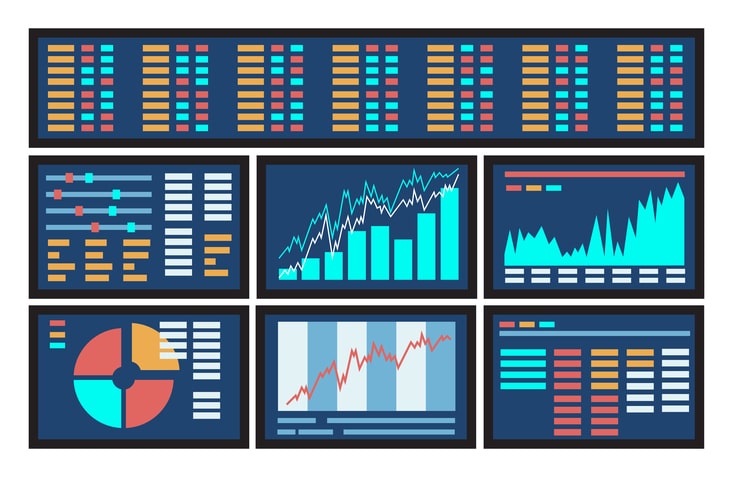
Trading Accounts
Part of your day trading setup will involve choosing a trading account. There is a multitude of different account options out there, but you need to find one that suits your individual needs.
- Cash account – Day trading with a cash account (also known as without margin), will allow you to only trade the capital you have in your account. This limits your potential profits, but it also prevents you losing more than you can afford.
- Margin account – This type account allows you to borrow money from your broker. This will enable you to bolster your potential profits, but also comes with the risk of greater losses and rules to follow. If you want to start day trading with no minimum this isn’t the option for you. Most brokerage firms will insist you lay down a minimum investment before you can start trading on margin. You can also experience a margin call, where your broker demands a greater deposit to cover potential losses.
The brokers list has more detailed information on account options, such as day trading cash and margin accounts. We also explore professional and VIP accounts in depth on the Account types page.
Terminology
Learn the trading lingo and vocabulary and you’ll unlock the door to a whole host of trading secrets. Below we have collated the essential basic jargon, to create an easy to understand day trading glossary.
General
- Leverage rate – This is the rate your broker will multiply your deposit by, giving you buying power.
- Automated trading – Automated trading systems are programs that will automatically enter and exit trades based on a pre-programmed set of rules and criteria. They are also known as algorithmic trading systems, trading robots, or just bots.
- Initial Public Offering (IPO) – This is when a company sells a fixed number of shares to the market to raise capital.
- Float – This is how many shares are available to trade. If a company releases 10,000 shares in the initial IPO, the float would be 10,000.
- Beta – This numeric value measures the fluctuation of a stock against changes in the market.
- Penny Stocks – These are any stocks trading below $5 a share.
- Profit/Loss ratio – Based on a percentage basis, this is the measure of a system’s ability to generate profit instead of loss.
- Entry points – This is the price at which you buy and enter your position.
- Exit points – This is the price at which you sell and exit your position.
- Bull/Bullish – If you take a bullish position day trading you expect the stock to go up.
- Bear/Bearish – If you take a bearish position you expect the stock to go down.
- Market trends – This is the general direction a security is heading over a given time frame.
- Hotkeys – These pre-programmed keys allow you to enter and exit trades rapidly, making them ideal if you need to exit a losing position as soon as possible.
Charts, Graphs, Patterns & Strategy
- Support level – This is the price level where the demand is strong enough that it prevents the decline in price past it.
- Resistance level – This is the price level where the demand is strong enough that selling the security will eradicate the increase in price.
- Moving Averages – They provide you with vital buy and sell signals. Whilst they won’t tell you in advance if a change is imminent, they will confirm if an existing trend is still in motion. Use them correctly and you can tap into a potentially profitable trend.
- Relative Strength Index (RSI) – Used to compare gains and losses over a specific period, it will measure the speed and change of the price movements of a security. In other words, it gives an evaluation of the strength of a security’s recent price performance. Day trading tip – this index will help you identify oversold and overbought conditions in the trading of an asset, enabling you to steer clear of potential pitfalls.
- Moving Average Convergence Divergence (MACD) – This technical indicator calculates the difference between an instruments two exponential moving averages. Using MACD can offer you straightforward buy and sell trading signals, making it popular amongst beginners.
- Bollinger Bands – They measure the ‘high’ and ‘low’ of a price in relation to previous trades. They can help with pattern recognition and enable you to arrive at systematic trading decisions.
- Vix – This ticker symbol for the Chicago Board Options Exchange (CBOE), shows the expected volatility over the next 30 days.
- Stochastics – Stochastic is the point of the current price in relation to a price range over time. The method aims to predict when prices are going to turn by comparing the closing price of a security to its price range.
If you stumble across a word or phrase that leaves you scratching your head, refer back to this day trading dictionary and chances are you’ll get a quick and easy explanation.
Read the glossary for definitions of many more words and concepts.
Types of Trading
How do you know which one to use?
- Swing trading – Swing traders usually make their play over several days or even weeks, which makes it different to day trading. It can still be a good method for the trader who wants to diversify.
- Traditional investing – Traditional investing is a longer game and looks to put money in popular assets such as stocks, bonds, and real estate for long-term value appreciation. Realistic investment returns over a whole year are in the 5-7% range. Unless you are already rich and can invest millions, traditional investing returns too little to make much of a difference on a daily basis. However, the intelligent trader will also invest long-term.
- Robo-advisors – An increasing number of people are turning to robo-advisors. You simply chose an investing profile, then punch in your degree of risk and time frame for investing. Then an algorithm will do all the heavy lifting. This is normally a long-term investing plan and too slow for daily use.
- Signals – Many service providers now offer reasonably priced trading signals. Look for verified results before subscribing.
Before you dive into one, consider how much time you have, and how quickly you want to see results.
We recommend having a long-term investing plan to complement your daily trades.

Stock Trading For a Living
So you want to work full time from home and have an independent trading lifestyle? If so, you should know that turning part time trading into a profitable job with a liveable salary requires specialist tools and equipment to give you the necessary edge.
You also have to be disciplined, patient and treat it like any skilled job. Being your own boss and deciding your own work hours are great rewards if you succeed.
Analytical Software
Whilst it may come with a hefty price tag, day traders who rely on technical indicators will rely more on software than on news. Whether you use Windows or Mac, the right trading software will have:
- Automatic Pattern Recognition – Identifies flags, channels, and other indicative patterns,
- Genetic and Neural Applications – Profit from neural networks and genetic algorithms to better predict future price movements.
- Broker integration – With direct links to brokerages, you can automatically execute trades, removing emotional distractions and streamlining the execution process.
- Backtesting – Applies strategies to previous trades to demonstrate how they would have performed. This enables traders to better understand how particular trading methods may perform in the future.
- Multiple news sources – Online newsfeeds and radio news alerts play an integral part in day trading. As Kofi Annan rightly asserted in one of the most prudent trading quotes, ‘knowledge is power’. The more you know, the quicker you can react, and the quicker you can react, the more day trading profits you might make.
Psychology
If you’re trading as a career you have to master your emotions. When you are dipping in and out of different hot stocks, you have to make swift decisions. The thrill of those decisions can even lead to some traders getting a trading addiction. To prevent that and to make smart decisions, follow these well-known day trading rules:
- Controlling fear – Even the supposedly best stocks can start plummeting. Fear then sets in and many investors liquidate their holdings. Now whilst they prevent losses, they also wave goodbye to potential gains. Recognising that fear is a natural reaction will allow you to maintain focus and react rationally.
- ‘Pigs get slaughtered’ – When you’re in a winning position, knowing when to get out before you get whipsawed or blown out of your position isn’t easy. Tackling your own greed is a hurdle, but one you must overcome.
Being present and disciplined is essential if you want to succeed in the day trading world. Recognising your own psychological pitfalls and separating your emotions is imperative.
Read the Guide to Making a Living on Day Trading.
7 Secrets To Success
Whether you’re looking for jobs you can do from home, or you want to start trading as a hobby, follow these seven essentials.
1. Setting Up
The better start you give yourself, the better the chances of early success. That means when you’re sat at your desk, staring at your monitors with hands dancing across your keyboard, you’re looking at the best sources of information.
That means having the best trading platform for your Mac or PC laptop/desktop, having a fast and reliable asset scanner and live stream, and software that won’t crash at a pivotal moment.
2. Keep It Simple
This is especially important at the beginning. You might be interested in s&p 500, mutual funds, bond futures, Nasdaq, Nasdaq futures, blue-chip stocks, equities, or the Dax 30, but to start with focus on only one. Get good at making money from one market/security before you branch out. The other markets will wait for you.
3. Be Realistic
The movies may have made it look easy, but don’t be fooled. Even the day trading gurus in college put in the hours. You won’t be invited to join that hedge fund after reading just one Bitcoin guide. You need to order those trading books from Amazon, download that spy pdf guide, and learn how it all works.
4. Risk Management
This is one of the most important lessons you can learn. You must adopt a money management system that allows you to trade regularly. Is day trading really worth it if you’ll be broke by the end of the first month?
History has shown that many successful traders never risk more than 1% of their account balance on a single trade. So, if you had $25000 or £25000 in your account, you’d only risk $250 / £250 on a single trade.
Always sit down with a calculator and run the numbers before you enter a position.
5. Keep A Record
One of the day trading fundamentals is to keep a tracking spreadsheet with detailed earnings reports. If you can quickly look back and see where you went wrong, you can identify gaps and address any pitfalls, minimising losses next time.
6. Timing
Just as the world is separated into groups of people living in different time zones, so are the markets.
If you start trading on the Cac 40 at 11:00 ET, you might find you’ve missed the best entry signals of the day already, minimising your potential end of day profit. So, if you want to be at the top, you may have to seriously adjust your working hours.
7. Sensible Decision Making
When you start day trading you’ll have a host of difficult decisions to make. Should you be using Plus500? What about day trading on Coinbase? Do you have the right desk setup? Where can you find an excel template? How do you set up a watch list? The meaning of all these questions and much more is explained in detail across the comprehensive pages on this website.
You can also find more detailed and comprehensive lessons in our top tips.
Taxes
The tax situation for day traders is entirely dependent on in which country the trader is “tax resident”. Furthermore, a popular asset such as Bitcoin is so new that tax laws have not yet fully caught up – is it a currency or a commodity?
How you will be taxed can also depend on your individual circumstances. For example, in the UK the HMRC are known to approach day trading activities from 3 different angles:
- Speculative/similar to gambling activities – Day trading profits would likely be totally free from income tax, business tax, and capital gains tax.
- Substantial self-employed trading activity – Likely to be subject to business tax.
- Significant activities of a private investor – Gains and losses would fall under the remit of the capital gains tax regime. Paying just business tax would be highly illegal and open you up to serious financial penalties.
Due to the fluctuations in day trading activity, you could fall into any three categories over the course of a couple of years. Although you don’t need a license, it’s important you rigorously monitor your trades, seek tax advice, and stay within laws and regulations when filing your tax returns.
Read the Guide to Day Trading Taxes for more comprehensive information on tax rules and reporting.
How Much Money Will You Make?
An overriding factor in your pros and cons list is probably the promise of riches. We’ve all heard stories of trading millionaires who started trading with just 1000 dollars, but soon hit the jackpot and mastered the markets. Whilst, of course, they do exist, the reality is, earnings can vary hugely.
Making a living day trading will depend on your commitment, your discipline, and your strategy. All of which you can find detailed information on across this website.
The real trading question then, does it really work? If you’re willing to invest the time and energy, then for you, it could well do.
